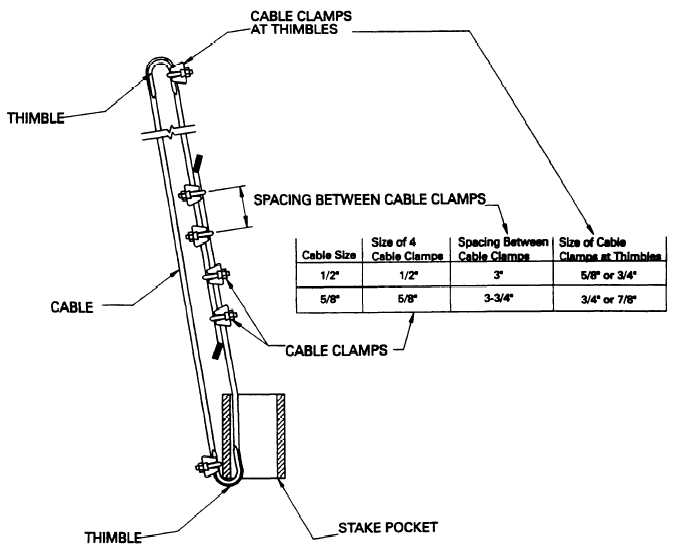TM 55-2350-224-14
Figure 3-4. Detail of a cable assembly for rail transport. (Table 3-2 and table 3-3)
Table 3-3. Tiedown Procedures for Securing Carriers on Flatcars (fig 3-1)
Item
Procedure
Chain tiedowns
Install at indicated locations. The number of chains used will depend on chain size/strength. Use
eight chains, NSN 4010–00–803–8858, two for each load binder, or eight chains, NSN
4010-00-443-4845, one for each load binder.
When chain-tiedown-equipped railcars are not available, wire rope and wood blocking must be
used.
Wire rope loops
Each tiedown is made from one piece of wire rope. Four 5/8-in. ropes are required for carriers
weighing 15,000 to 25,000 pounds, one at each tiedown. Eight 1/2-in. ropes are required for carriers
weighing 25,000 to 30,000 pounds, two at each tiedown, using a same-side tiedown pattern.
Length as required (12 to 16 feet). Form a complete loop between carrier tiedown provision and
railcar stake pocket. The angle between the cables and railcar deck (as viewed from the side)
should be as close to 45° as possible. The wire rope ends must overlap at least 24 inches. Tension
the wire rope by using two cable grippers and a (3-ton) come-along or cable tightener.
Cable clamps
For 1/2-in. wire rope, space 1/2-in. cable clamps 3 in. apart. Alternately torque nuts a minimum of
65 ft-lb. For 5/8-in. wire rope, space 5/8-in. cable clamps 3 3/4 in. apart. Alternately torque nuts to a
minimum of 95 ft-lb.
Thimbles
Use thimbles to protect cable at sharp bends. Attach to cable with cable clamps (5/8-in. clamps on
1/2-in. thimbles and 5/8-in. clamps on 5/8-in. thimbles).
Blocking
Position and nail blocking to railcar as shown in figure 3-2.
3-6

